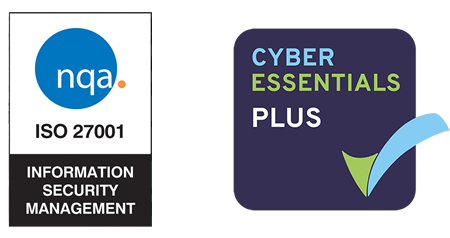As far as business buzzwords go, “Digital Transformation” is right up there with other corporate phrases that are prevalent in the workplace and management meetings, but it’s one that not everyone may have a firm grasp on.
In its pure essence “Digital Transformation” is organisation innovation fuelled by the explosion of IT related solutions such as the cloud, artificial intelligence (AI), the Internet of things (IoT) and the like. These technologies and solutions can be exploited and embraced to build a Modern Workplace environment, providing your organisation with new ways to understand, manage, and transform the way you operate.
However, simply understanding the term doesn’t mean your organisation has embraced it or that you should expect to see it as a line item in the yearly budget. On the contrary, research shows that in reality only a small number of organisations are embracing transformation in a manner that meets the true definition. Further more and most disappointingly, other research emphasises just how few are achieving success once they’ve started on their transformation journey!
As a trusted Microsoft Gold Partner, we’ve assisted many organisations in helping them understand their situation and followed on to aid them with their journey of evolution. We’ve seen most situations and hence why we’ve drawn up these following 7 typical signs that you should be looking out for.
Colleagues Are Buried in File Shares
If colleagues are spending hours every day filling out forms or hunting for documents in separate file shares then a collaboration solution will be the answer you’re looking for.
By digitising documents, you can then use artificial intelligence and automation to help you complete them in less time. Digital files can fetch data and automatically populate fields so that all your workers have to do is give the file a quick look and approve it. The time your employees save on repetitive tasks or searching through end-less levels of sub-folders can then be used to work on more valuable tasks.
You have high staff turnover
Modern Workplaces improve colleague engagement and makes prospective ones more interested in your organisation because daily work is simply easier, less frustrating and more meaningful. Instead of them fighting daily to just achieve their operational goals they become empowered to innovate and drive the organisation forward.
Digital transformation can also eliminate ongoing struggles to fill IT support positions through managed IT services, such as help desks and infrastructure management. This approach addresses the challenges of providing long-term maintenance, so many organisations find it beneficial to have a partner that offers those services in addition to assessment, design and implementation.
Using IT managed services makes it possible for partners to serve as a singular source for not only running a business’ systems but also keeping them aligned with technological advances, regulatory and industry updates, and changing business needs.
You Can’t Find the Data You Need
A lack of access to timely and comprehensive business and customer insights can put a company at a significant disadvantage today because these capabilities are widely available. It’s safe to assume that your competitors are already using insights to drive performance gains, enable decisions about risks and benefits, understand consumer behavior, and personalize interactions with employees and customers. It isn’t enough to simply make the data available or increase the flow of data. Modern solution integration, AI and workflow process automation make it easier for non-technical professionals to perform sophisticated analysis independently, but this can’t happen without a solid data governance framework.
Plans and Projects Get Stuck
If you’re looking to expand your operations, but continuously find your plans and projects stalling, this could be a sign that you need to digitise. Project execution becomes problematic when projects aren’t clearly organised and team collaboration isn’t efficient. Better implementation and adoption of technology will help you overcome these operational issues increasing project execution and success rates.
You’re not achieving your goals
Disconnected technology solutions and siloed data can work against your efforts to improve and reach your targets. Legacy solutions with restricted transparency often mask problems, and this, in turn, undermines process efficiency across the customer life cycle, from marketing to service delivery. Many legacy solutions simply weren’t designed for today’s digital organisations and marketplaces. They lack crucial functionality, such as secure remote access, and they often can’t scale or flex as organisations’ demand or as market needs change. Understanding which applications align with strategic goals and can work securely and synergistically is an essential step. This also is where many midmarket organisations need the most help.
Multiple fragmented, tactical approaches rather than a unified approach that is strategic and integrated.
Traditional approaches to acquiring and implementing IT solutions and supporting digital technologies have been siloed, with lines of business and major departments pursuing their own initiatives independently. This typically comes about from split departmental budgets and the lack of any over-arching CTO or CIO coordination. With respect to digital transformation in particular, this kind of approach is increasingly inefficient, a potential waste of resources, and conflicting solutions which decrease operational efficiencies and agility.
Inadequate leadership buy-in and support
Digital transformation isn’t a part of the agenda for every senior leadership meeting or strategy session.
Having an executive leader who serves as the champion and primary point person for digital transformation is necessary, but not sufficient. The entire executive team, as well as other key senior leaders, must understand what digital transformation means in the context of the organisation’s operating environment and their own functional area. They must also share a commitment to converting the organisation from one driven by increasingly-archaic Industrial Era principles and models to one that has adapted to Digital Era realities, embraced digital technology opportunities, and prepared for digital threats and risks.




